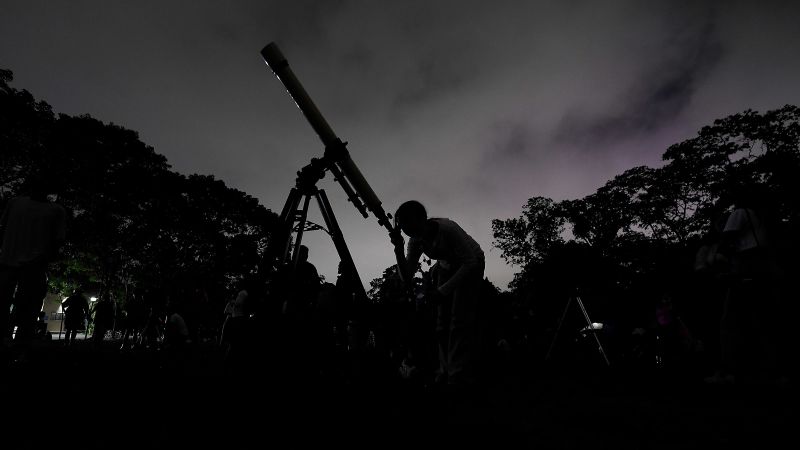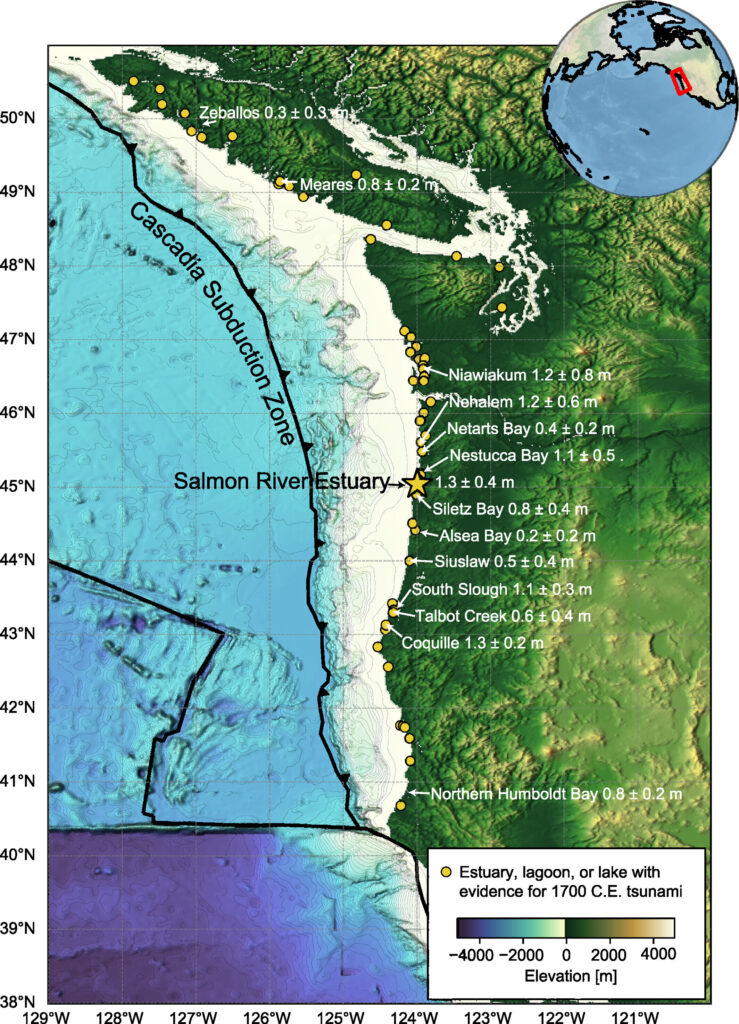Mathias Delacroix/AP/File
A telescope could help spot Uranus and Neptune when they appear to be in conjunction with other planets early Monday morning in most parts of the world; Sunday is ideal for viewers in North America and Europe.
Sign up for CNN’s Science of Miracles newsletter. Explore the universe with news of fascinating discoveries, scientific advances and more.
CNN
–
A “planet parade” during which six planets will appear lined up in the sky near dawn is on its way, but only three planets will be visible to the naked eye – and the phenomenon is more common than it sounds.
“You will be able to see Mars, Saturn and Jupiter,” said Dr. James O’Donoghue, a planetary astronomer and researcher at the University of Reading in the United Kingdom. “If you have binoculars and if you know where to look, you can probably see Uranus, but there’s not much point in waiting until sunrise – you can do it earlier in the night. The bottom line is that you can only see half of the planets in this planetary formation with the naked eye.”
The best day to see the spectacle in Europe and North America will be Sunday, about half an hour before sunrise, according to O’Donoghue. Aiming for that time frame would give you a chance to spot Mercury, too, though it might not be easy even with binoculars, he said.
“The problem is that the sun will light up the sky in that area,” added O’Donoghue. “It’s just before sunrise, but it’s still going to be very, very bright in the sky, and you probably don’t want to point your binoculars at the sun.”
If you have one, a telescope would help, especially if you’re hoping to spot Uranus and Neptune. “But to be able to see these, you have to zoom in on one target so much that you don’t see the others anyway, so you get rid of your entire field of view,” he said.
The order in which the planets will line up on Sunday is Jupiter, Mercury, Uranus, Mars, Neptune and Saturn and they will be accompanied by a crescent moon. Later in the week, by Thursday, the moon will be out of the way — reducing light pollution, O’Donoghue noted — and Mercury will have swapped positions with Jupiter.
The scope will be visible to sky watchers anywhere but the ideal the date to see the planets at closest alignment may vary depending on where you are in the world.
It is important to note that this extension is not happening in space, but only in the sky as seen from our planet.
“From the perspective of someone standing on Earth, looking at the sky, it will look like there is more or less a straight line of planets, which you might call a planetary alignment or a planetary parade,” said Dr. Kate. Pattle, lecturer in the department of physics and astronomy at University College London.
“But physically, there’s no actual stretching going on. It’s just that most of the planets are more or less on the same side of the sun at the moment. If the planets actually lined up with each other in space, that would be called a syzygy, and that’s a much, much rarer event,” she added.
This type of planetary alignment is actually not rare at all. “There will be a few more in the next couple of years because the outer planets move through the sky more slowly as they are farther away from us, making these kinds of alignments more likely to happen,” Pattle said. “In fact, a better one will probably happen next February, when we’ll have all the planets in the sky at the same time, including the missing Venus.”
Pattle recommends Monday, about an hour before sunrise, as the best chance to see the show in most parts of the world, and she is most optimistic that Mercury will join the group of planets visible without instruments.
Mercury is usually visible to the naked eye if you’re somewhere with low light pollution, but it’s better with binoculars because (the planet) isn’t particularly bright and is only visible just before dawn, so it’s usually in a background quite bright. ” she said.
An app like Stellarium Mobile or Night Sky can be useful if you’re not sure where to look, and ideally you’ll need to be somewhere with low light pollution and a low horizon, because Jupiter, Mercury and Uranus won’t be too far from it, Pattle said.
You should also try to be somewhere with a good view of the east, because this will be more or less in the direction of the sunrise. “Jupiter will be easier to spot because it will be the brightest thing in the sky after the moon,” Pattle said. The other planets are not easy to spot, but they don’t twinkle the same way as the stars, so this is one way to spot them.




